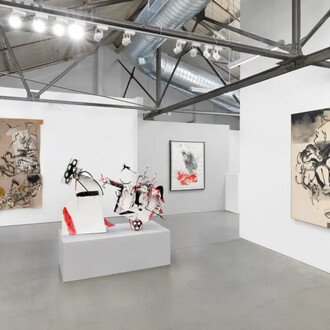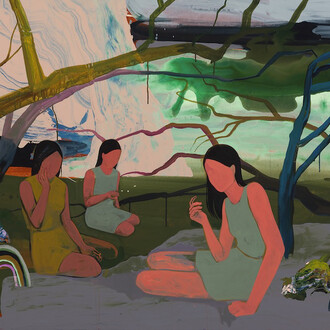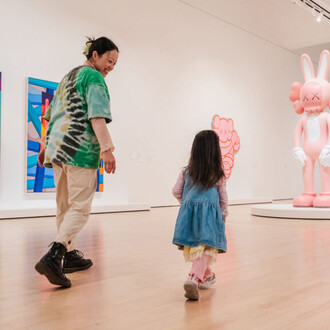In honor of our 50th anniversary, Rena Bransten Gallery is pleased to present the second in a series of exhibitions celebrating the Gallery’s history and early roots, this time highlighting photography and video art.
Rena Bransten opened Quay Ceramics Gallery, in partnership with gallerist Ruth Braunstein, originally located at 560 Sutter Street in San Francisco and showing ceramic artists from California. One of Bransten’s first non-ceramics shows, in 1979, upon deciding to expand the gallery’s scope to include all media, was of photographer Judith Golden whose unique painted photographs looked at gender, identity, and pop culture.
Over the decades the Gallery has continually offered a platform to often overlooked artists, including many early adopters of photography, specifically large-scale and color, and video. Bransten has championed photographers who push the medium forward – notably Candida Höfer, Vik Muniz, Uta Barth, Henry Wessel, & Dawoud Bey, and she began showing video artists at a time when the medium was not yet an accepted form of art, among them Jim Campbell, Judith Barry, Dana Birnbaum.
An early work by Dawoud Bey, David Hammons, Pissed off, 1981 (printed 2019) included in this exhibition records two significant actions made by his friend, artist David Hammons, in response to the installation of Richard Serra’s monumental public sculpture in Tribeca, New York. Two 1989 works by photographer and conceptual artist Sophie Calle are also on view, showing her signature combination of photographic imagery with framed text. Doug Hall’s Chrysopylae is a two-channel video portrait of the Golden Gate Bridge seen over the course of a day and under differing weather conditions from all perspectives: the bridge emerges out of darkness into the morning dawn and twenty-eight minutes later fades into the night.
For 50 years Rena Bransten has guided the Gallery on the principals of close relationships, humanity, and belief in current scholarship. Advocacy for and friendships with artists and arts professionals has always been at the core of the Gallery’s ethos. As Bransten states, she is “very lucky, and it has been an extraordinary life in art.”
















